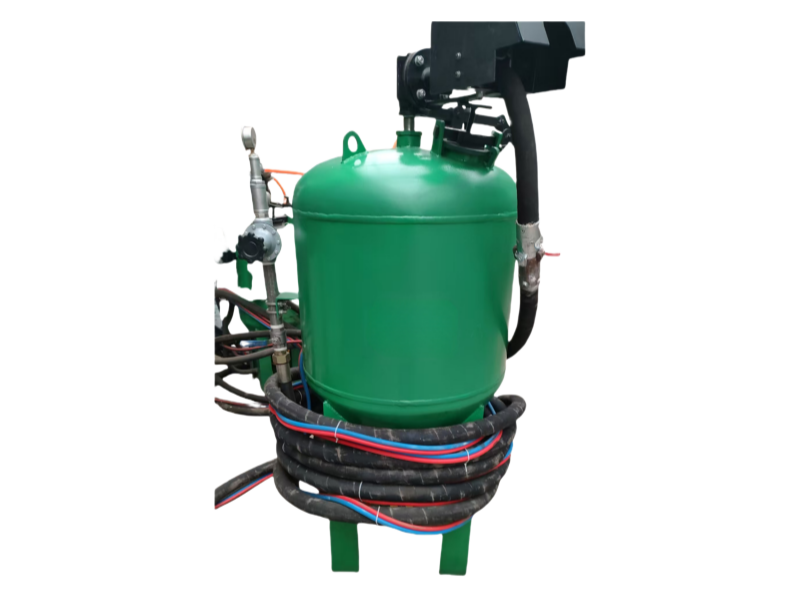

MIZHI
TECHNOLOGY
Hotline
+86-136-8495-9862

Definition
A small sand blaster is a compact device used for surface cleaning, stripping, and preparation. It propels abrasive materials, such as sand, glass beads, or aluminum oxide, at high speed using compressed air. Despite its small size, it is highly effective for various tasks, including rust removal, paint stripping, and surface roughening.
Uses
Small sand blasters are versatile tools suitable for a wide range of applications:
1.Rust Removal: Quickly and effectively removes rust from metal surfaces.
2.Paint Stripping: Removes multiple layers of paint from various materials.
3.Surface Preparation: Prepares surfaces for painting or coating by creating a rough texture.
4.Glass Etching: Creates designs and patterns on glass surfaces.
5.Home Appliance Maintenance: Cleans and restores small appliances and tools.



A dustless water sand blasting pot, also known as a wet blast pot, works on the principle of combining water with abrasive media and using compressed air to propel the mixture onto a surface at high speed to achieve cleaning, stripping or other surface preparation tasks. Here's a detailed explanation of its working principle:
Blasting Process
1.When the air compressor starts working, it pressurizes the blast pot and generates a stream of high-pressure air. This high-pressure air flows into the blast pot and mixes with the abrasive media and water.
2.The abrasive media and water form a slurry-like mixture. The high-pressure air acts as the propelling force, carrying the mixture through the blast hose and out of the nozzle at high speed.
3.As the mixture strikes the surface to be treated, the water in the system plays a crucial role. It helps to cushion the impact of the abrasive media on the surface, reducing friction and heat generation. This prevents damage to delicate materials like metal or fiberglass and avoids warping caused by excessive heat.
4.The water also effectively captures and suppresses dust particles produced during the blasting process. When the abrasive media impacts the surface and breaks apart or grinds the contaminants, the dust particles are surrounded and bound by the water, preventing them from becoming airborne. This significantly reduces dust pollution in the surrounding environment and minimizes the risk of dust-related health problems for operators and nearby personnel.